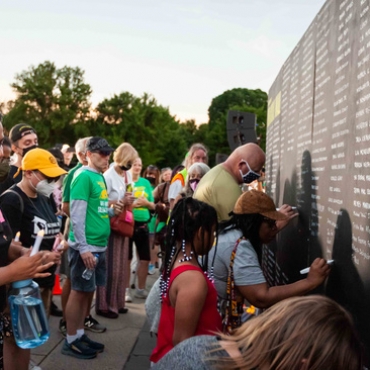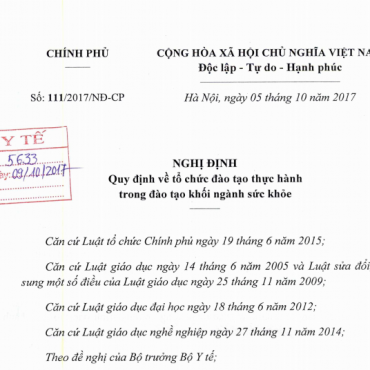Contact Admission
International Collaboration
Antibody Response to 2-Dose SARS-CoV-2 mRNA Vaccine Series in Solid Organ Transplant Recipients
Antibody Response to 2-Dose SARS-CoV-2 mRNA Vaccine Series in Solid Organ Transplant Recipients
Brian J. Boyarsky, MD, PhD1; William A. Werbel, MD2; Robin K. Avery, MD2; et alAaron A. R. Tobian, MD, PhD3; Allan B. Massie, PhD1; Dorry L. Segev, MD, PhD1; Jacqueline M. Garonzik-Wang, MD, PhD1
JAMA. Published online May 5, 2021. doi:10.1001/jama.2021.7489
In contrast to immunocompetent participants in vaccine trials,1,2 a low proportion (17%) of solid organ transplant recipients mounted a positive antibody response to the first dose of SARS-CoV-2 messenger RNA (mRNA) vaccines, with those receiving anti–metabolite maintenance immunosuppression less likely to respond.3 In this study, we assessed antibody response after the second dose.
Methods
Transplant recipients without prior polymerase chain reaction–confirmed COVID-19 were recruited from across the US to participate in this prospective cohort through a digital campaign. Those who completed the 2-dose SARS-CoV-2 mRNA vaccine series between December 16, 2020, and March 13, 2021, were included and followed up through April 13, 2021. As described previously,3 semiquantitative antispike serologic testing was undertaken with the Roche Elecsys anti–SARS-CoV-2 S enzyme immunoassay, positive cutoff of at least 0.8 U/mL, which tests for the receptor-binding domain of the SARS-CoV-2 spike protein, or the EUROIMMUN enzyme immunoassay, positive cutoff of at least 1.1 arbitrary units, which tests for the S1 domain of SARS-CoV-2 spike protein, both key measures of humoral immune response.4,5 This study was approved by the Johns Hopkins institutional review board; participants provided informed consent electronically.
The proportion of patients who developed a positive antibody response was assessed with an exact binomial confidence interval. The Fisher exact test was used to compare categorical variables, such as antimetabolite immunosuppression, and the Kruskal-Wallis test for continuous variables. All tests were 2-sided with α = .05. Analyses were performed using Stata 16.1/Windows.
Results
We studied 658 transplant recipients who received 2 doses of SARS-CoV-2 mRNA vaccine (Table); the first-dose results of 396 of these recipients were previously reported.3 At a median (IQR) of 21 (18-25) days after dose 1, antibody was detectable in 98 participants (15%) (95% CI, 12%-18%). At a median (IQR) of 29 (28-31) days after dose 2, antibody was detectable in 357 participants (54%) (95% CI, 50%-58%).
Overall, of the 658 participants, 98 (15%) had measurable antibody response after dose 1 and dose 2; 301 (46%) had no antibody response after dose 1 or dose 2; and 259 (39%) had no antibody response after dose 1 but subsequent antibody response after dose 2 (Figure).
Among all 658 participants, median (IQR) antibody levels after dose 2 were 2.14 U/mL (<0.4-245.8) (Roche) and 1.23 arbitrary units (0.13-6.38) (EUROIMMUN). Among the 357 with detectable antibody after dose 2, median (IQR) antibody levels were 142.1 U/mL (9.44->250) (Roche) and 6.48 arbitrary units (3.75-8.72) (EUROIMMUN) overall; 34.7 U/mL (5.38->250) (Roche) and 5.05 arbitrary units (2.33-7.02) (EUROIMMUN) in the 259 with no antibody response after dose 1; and >250 U/mL (>250->250) (Roche) and 9.23 arbitrary units (8.62-9.73) (EUROIMMUN) in the 98 with antibody response after dose 1.
Among the 473 receiving antimetabolites, 38 participants (8%) had antibody response after dose 1 and dose 2; 268 (57%) had no antibody response after dose 1 or dose 2; and 167 (35%) had no antibody response after dose 1 but subsequent antibody after dose 2. Among the 185 participants not receiving antimetabolites, 60 (32%) had antibody response after dose 1 and dose 2; 33 (18%) had no antibody response after dose 1 or dose 2; and 92 (50%) had no antibody response after dose 1 but subsequent antibody after dose 2.
Discussion
In this study of the humoral response to 2 doses of mRNA SARS-CoV-2 vaccine among solid organ transplant recipients, the majority had detectable antibody responses after the second dose, although participants without a response after dose 1 had generally low antibody levels. Poor humoral response was persistently associated with use of antimetabolite immunosuppression.
Although no threshold has been established for protective immunity, antibody levels were well below that which has been observed in immunocompetent vaccinees.6
Limitations of this study include a sample that may lack external validity, lack of an immunocompetent control group, lack of assessment of postvaccination SARS-CoV-2, and lack of exploration of memory B-cell or T-cell responses.
Although this study demonstrates an improvement in antispike antibody responses in transplant recipients after dose 2 compared with dose 1, these data suggest that a substantial proportion of transplant recipients likely remain at risk for COVID-19 after 2 doses of mRNA vaccine. Future studies should address interventions to improve vaccine responses in this population, including additional booster doses or immunosuppression modulation.
Section Editor: Jody W. Zylke, MD, Deputy Editor.
Article Information
Corresponding Author: Dorry Segev, MD, PhD, Department of Surgery, Johns Hopkins Medical Institutions, 2000 E Monument St, Baltimore, MD 21205 (dorry@jhmi.edu).
Accepted for Publication: April 26, 2021.
Published Online: May 5, 2021. doi:10.1001/jama.2021.7489
Author Contributions: Drs Garonzik-Wang (principal investigator) and Segev had full access to all the data in the study and take responsibility for the integrity of the data and the accuracy of the data analysis.
Concept and design: Boyarsky, Werbel, Avery, Massie, Segev, Garonzik-Wang.
Acquisition, analysis, or interpretation of data: All authors.
Drafting of the manuscript: Boyarsky, Segev, Garonzik-Wang.
Critical revision of the manuscript for important intellectual content: All authors.
Statistical analysis: Boyarsky, Massie, Segev.
Obtained funding: Segev, Garonzik-Wang.
Administrative, technical, or material support: Boyarsky, Tobian, Massie, Segev, Garonzik-Wang.
Supervision: Werbel, Massie, Segev, Garonzik-Wang.
Conflict of Interest Disclosures: Dr Werbel reported receiving grants from the American Society of Transplantation Research Network Clinical Science Fellowship Grant. Dr Avery reported receiving grants from Aicuris, Astellas, Chimerix, Merck, Oxford Immunotec, Qiagen, and Takeda/Shire. Dr Segev reported serving as a consultant to and receiving honoraria for speaking from Sanofi, Novartis, CSL Behring, Jazz Pharmaceuticals, Veloxis, Mallincrodt, and Thermo Fisher Scientific. No other disclosures were reported.
Funding/Support: This work was supported by the Ben-Dov family; grants F32DK124941 (Dr Boyarsky), K01DK101677 (Dr Massie), and K23DK115908 (Dr Garonzik-Wang) from the National Institute of Diabetes and Digestive and Kidney Diseases (NIDDK); grant K24AI144954 (Dr Segev) from the National Institute of Allergy and Infectious Diseases (NIAID); and by grant gSAN-201C0WW from the Transplantation and Immunology Research Network of the American Society of Transplantation (Dr Werbel).
Role of the Funder/Sponsor: The funders had no role in the design and conduct of the study; collection, management, analysis, and interpretation of the data; preparation, review, or approval of the manuscript; and decision to submit the manuscript for publication.
Disclaimer: The analyses described here are the responsibility of the authors alone and do not necessarily reflect the views or policies of the US Department of Health and Human Services. The mention of trade names, commercial products, or organizations does not imply endorsement by the US government.
Additional Contributions: In addition to the individuals recognized previously,3 we also acknowledge the following individuals for their assistance with this study, none of whom was compensated for his or her contributions. Yolanda Eby, MS (Department of Pathology, Johns Hopkins School of Medicine), for data collection; Teresa P-Y. Chiang, MD, MPH (Department of Surgery, Johns Hopkins School of Medicine) for data analysis; Sunjae Bae, MD, PhD (Department of Surgery, Johns Hopkins School of Medicine), for data analysis; Iulia Barbur, BSE (Department of Surgery, Johns Hopkins School of Medicine), for data collection; Muhammad Asad Munir, MBBS (Department of Surgery, Johns Hopkins School of Medicine), for data collection; Andrew H. Karaba, MD, PhD (Department of Medicine, Johns Hopkins School of Medicine), for data analysis; Andrea L. Cox, MD, PhD (Department of Medicine, Johns Hopkins School of Medicine), for data analysis; Justin R. Bailey, MD, PhD (Department of Medicine, Johns Hopkins School of Medicine), for data analysis; Anna P. Durbin, MD (Department of International Health, Johns Hopkins Bloomberg School of Public Health), for data analysis; and Kawsar R. Talaat, MD (Department of International Health, Johns Hopkins Bloomberg School of Public Health), for data analysis.
References
1.Walsh EE, Frenck RW Jr, Falsey AR, et al. Safety and immunogenicity of two RNA-based Covid-19 vaccine candidates. N Engl J Med. 2020;383(25):2439-2450. doi:10.1056/NEJMoa2027906PubMedGoogle ScholarCrossref
2.Jackson LA, Anderson EJ, Rouphael NG, et al; mRNA-1273 Study Group. An mRNA vaccine against SARS-CoV-2. N Engl J Med. 2020;383(20):1920-1931. doi:10.1056/NEJMoa2022483PubMedGoogle ScholarCrossref
3.Boyarsky BJ, Werbel WA, Avery RK, et al. Immunogenicity of a single dose of SARS-CoV-2 messenger RNA vaccine in solid organ transplant recipients. JAMA. Published online March 15, 2021. doi:10.1001/jama.2021.4385
ArticlePubMedGoogle Scholar
4.Klein SL, Pekosz A, Park HS, et al. Sex, age, and hospitalization drive antibody responses in a COVID-19 convalescent plasma donor population. J Clin Invest. 2020;130(11):6141-6150. doi:10.1172/JCI142004PubMedGoogle ScholarCrossref
5.Patel EU, Bloch EM, Clarke W, et al. Comparative performance of five commercially available serologic assays to detect antibodies to SARS-CoV-2 and identify individuals with high neutralizing titers. J Clin Microbiol. Published online January 21, 2021. doi:10.1128/JCM.02257-20PubMedGoogle Scholar
6.Mueller T. Antibodies against severe acute respiratory syndrome coronavirus type 2 (SARS-CoV-2) in individuals with and without COVID-19 vaccination: a method comparison of two different commercially available serological assays from the same manufacturer. Clin Chim Acta. 2021;518:9-16. doi:10.1016/j.cca.2021.03.007PubMedGoogle ScholarCrossref
Source: https://jamanetwork.com/journals/jama/fullarticle/2779852?guestAccessKey=84bf45eb-3be6-41e0-bd74-4d27849bb72e&utm_source=silverchair&utm_campaign=jama_network&utm_content=covid_weekly_highlights&utm_medium=email
Other library
- One in 10 People Who Had Omicron Got Long COVID: Study ( 20:25 - 01/06/2023 )
- Physical Medicine Academy Issues Guidance on Long COVID Neurologic Symptoms ( 09:58 - 19/05/2023 )
- Breakthrough' Study: Diabetes Drug Helps Prevent Long COVID ( 08:55 - 15/03/2023 )
- BCG vaccine (thuốc chủng ngừa bệnh lao) & SARS-CoV 2 (covid-19) infection ( 10:08 - 27/10/2022 )
- Đại dịch COVID-19 đã kết thúc? ( 09:11 - 22/09/2022 )
- Dị hình giới tính ở COVID-19: Ý nghĩa tiềm năng về lâm sàng và sức khỏe cộng đồng ( 09:22 - 19/03/2022 )
- COVID-19 Update ( 21:00 - 06/03/2022 )
- Một người có thể tái mắc Covid-19 bao nhiêu lần ?? / kèm 6 tài liệu mới ... do "waning immunity", xảy ra ≥6 tháng sau chủng ngừa hay mắc nhiễm .. ( 20:25 - 06/03/2022 )
- T-cells from common colds can provide protection against COVID-19 - study ( 08:25 - 11/01/2022 )
- Coronavirus Can Spread to Heart, Brain Days After Infection ( 07:56 - 30/12/2021 )
















